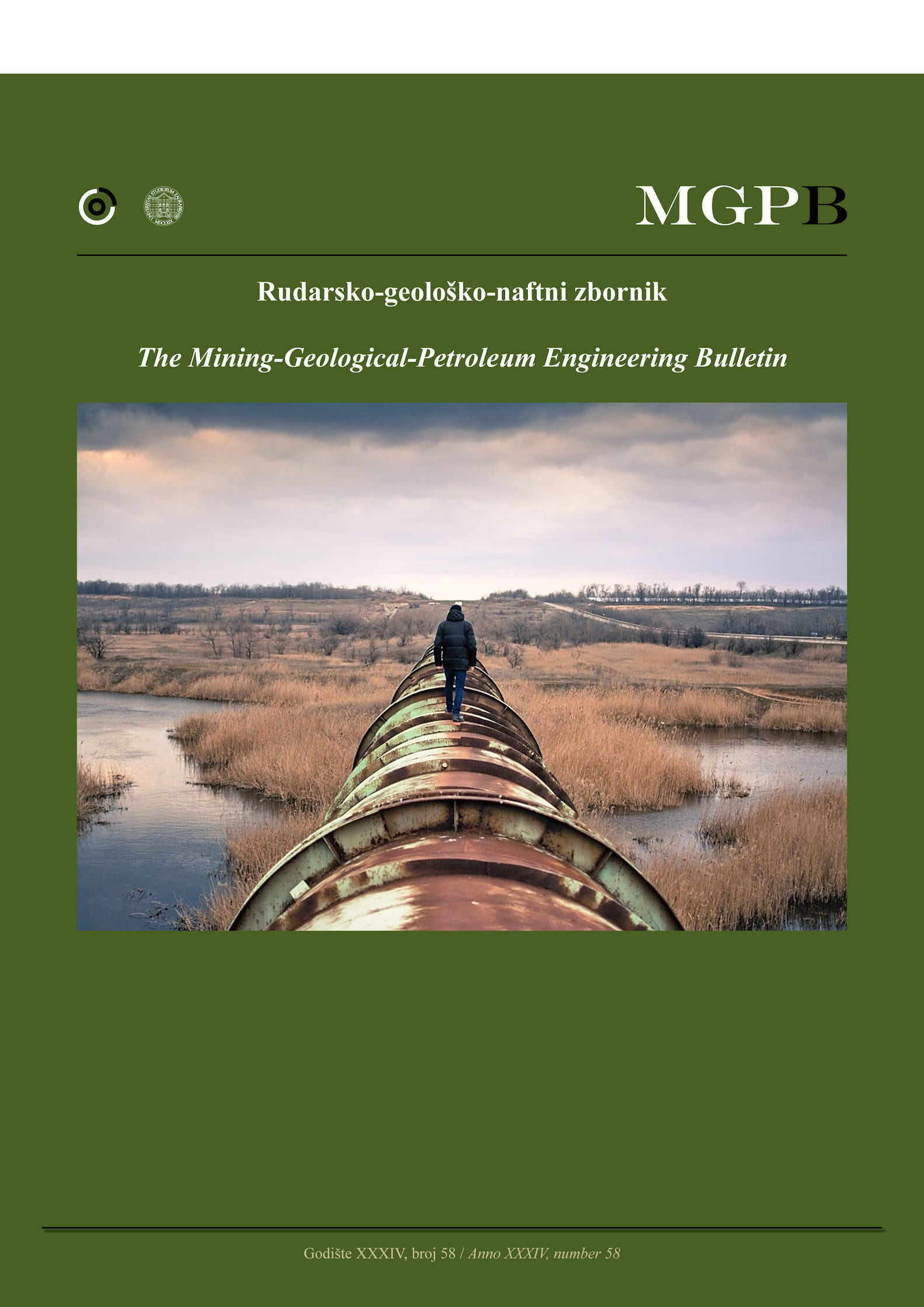Determination of detonation front curvature radius of ANFO explosives and its importance in numerical modelling of detonation with the Wood-Kirkwood model
DOI:
https://doi.org/10.17794/rgn2022.2.9Keywords:
ANFO, nonideal detonation, detonation front curvature radius, detonation velocity, numerical modelingAbstract
Unlike most military high explosives, which are characterized by an almost plane detonation front, ammonium nitratebased commercial explosives, such as ANFO (ammonium nitrate/fuel oil mixture) and emulsion explosives, are characterized by a curved detonation front. The curvature is directly related to the rate of radial expansion of detonation products in the detonation driving zone and the rate of chemical reactions, and it is one of the characteristics of nonideal explosives. The detonation theories used to model the nonideal behaviour of explosives require both reaction rate and rate of radial expansion to be known/specified as input data. Unfortunately, neither can be measured and what is mostly used is a link between these rates and parameters which can be more easily measured. In this paper, the Wood-Kirkwood approach of determination of radial expansion through the radius of detonation front curvature and the electro-optical technique for experimental determination of detonation front curvature of ANFO explosives is applied. It was shown that an experimentally determined radius of detonation front curvature vs charge diameter, incorporated in the Wood-Kirkwood detonation theory, can satisfactorily reproduce experimental detonation velocity-charge diameter data for ANFO explosives, especially when the pressure-based reaction rate law is also calibrated (D=1.3 and k=0.06 1/(μs/GPaD)).
Downloads
Published
How to Cite
Issue
Section
License
Copyright (c) 2021 authors and journal

This work is licensed under a Creative Commons Attribution 4.0 International License.
Creative Commons-BY
Authors who publish with this journal agree to the following terms:
In agreeing this form, you certify that:
- You read the ethical codex of the RGN zbornik available at journal web.
- You submitted work is your original work, and has not previously been published and does not include any form of plagiarism.
- You own copyright in the submitted work, and are therefore permitted to assign the licence to publish to RGN zbornik.
- Your submitted work contains no violation of any existing copyright or other third party right or any material of an obscene, libellous or otherwise unlawful nature.
- You have obtained permission for and acknowledged the source of any illustrations, diagrams or other material included in the work of which you are not the copyright owner.
- You have taken due care to ensure the accuracy of the work, and that, to the best of your knowledge, there are no false statements made within it.
- All co-authors of this submitted work are aware of, and in agreement with, the terms of this licence and that the submitted manuscript has been approved by these authors.
Publication licence
You retain copyright in your submitted work, according to journal license policy (CC-BY). By signing this form you agree that RGN zbornik may publish it under the publication licence. In summary the licence allows the following:
Anyone is free:
- To copy, distribute, display, and perform the work.
- To make derivative works.
Under the following conditions:
- The original author must always be given credit.
- The work may not be used for commercial purposes.
- If the work is altered, transformed, or built upon, the resulting work may only be distributed under a licence identical to this one.
Exceptions to the licence
In addition to publishing the work printed under the above licence, RGN zbornik will also enable the work to be visible online.
The journal editorial can change the licence rules anytime but it cannot retroactively restrict author(s) rights.


